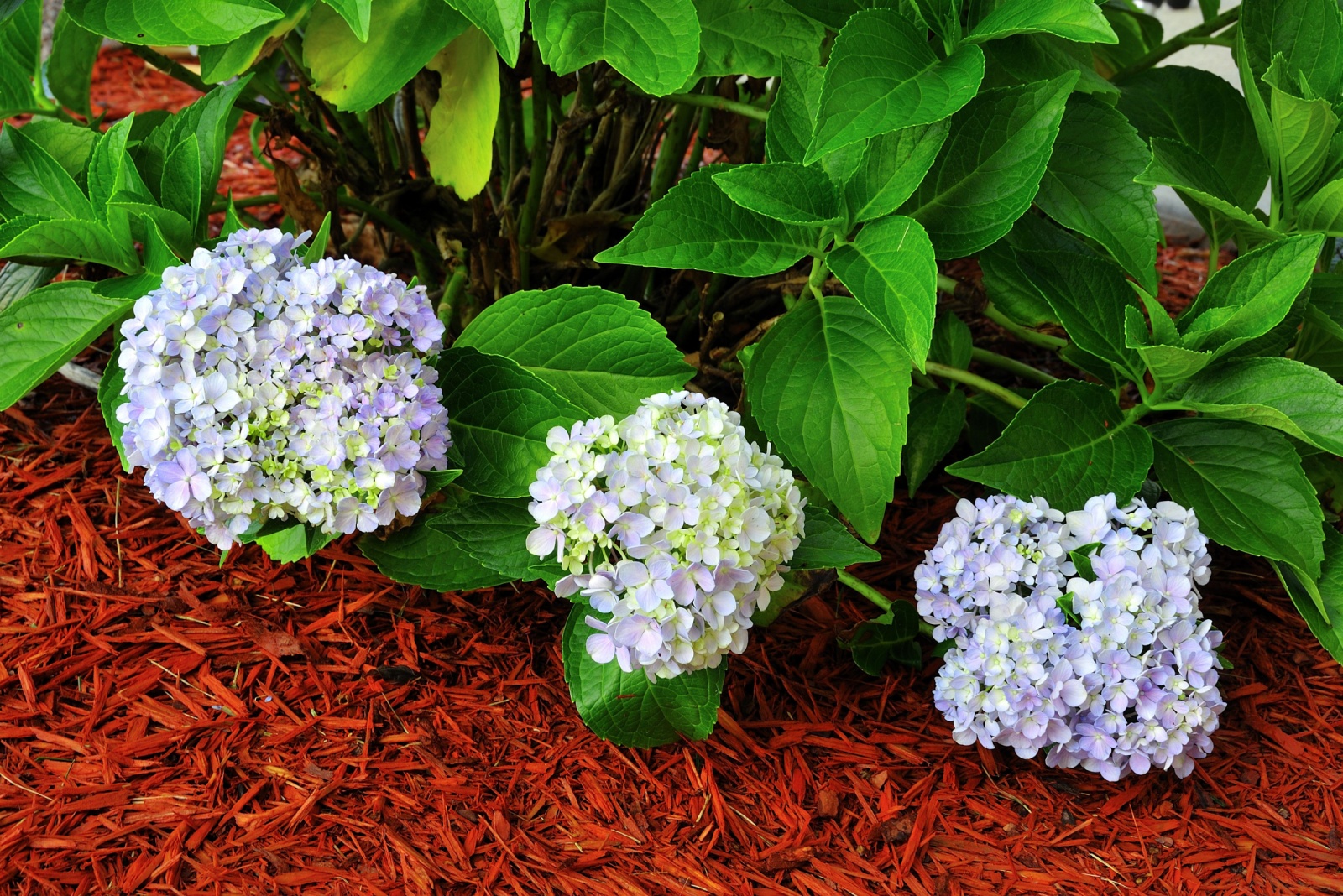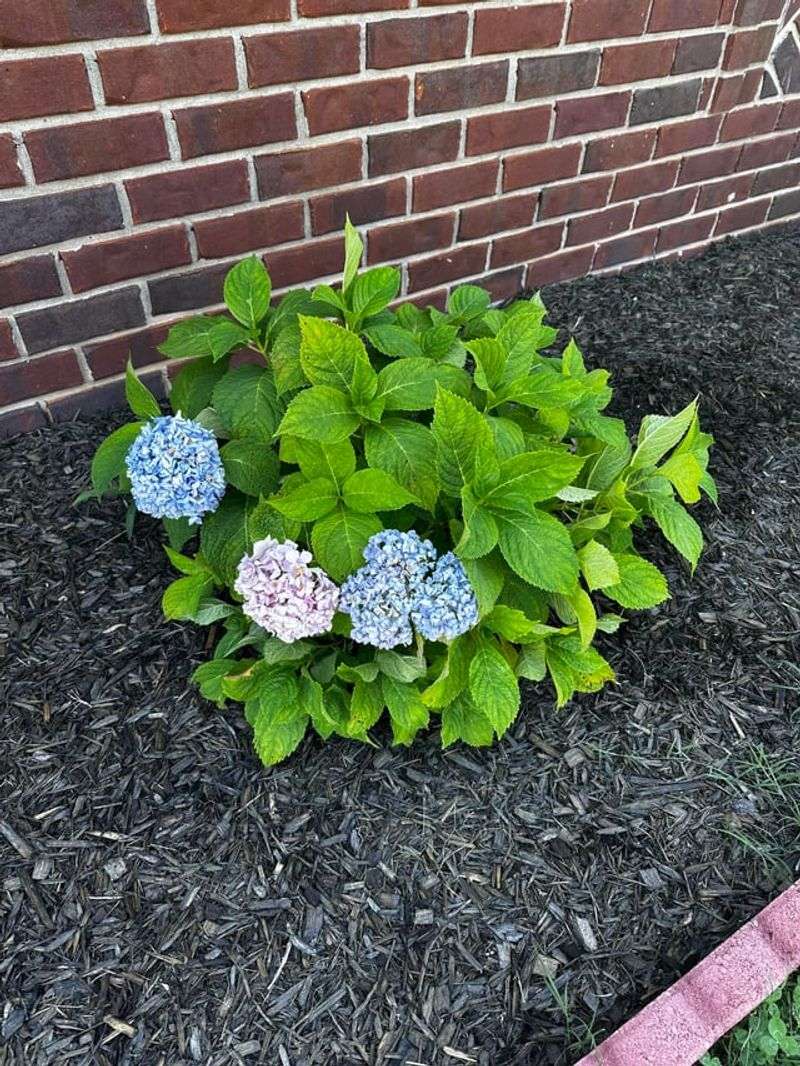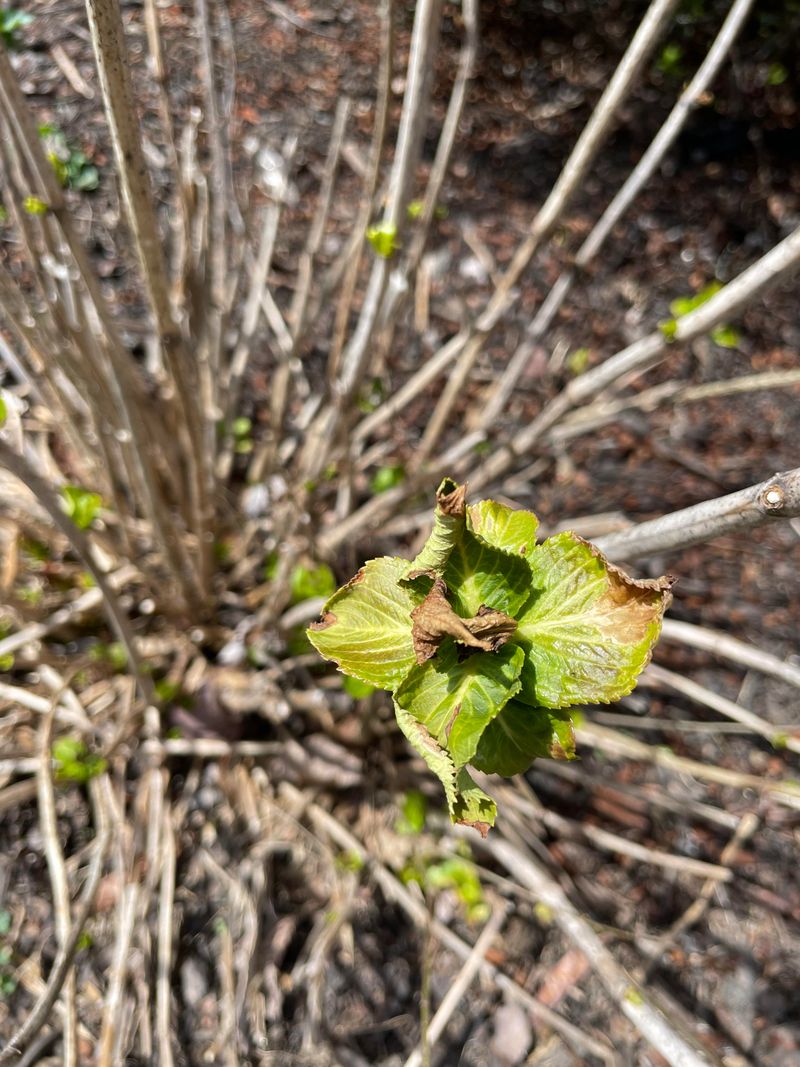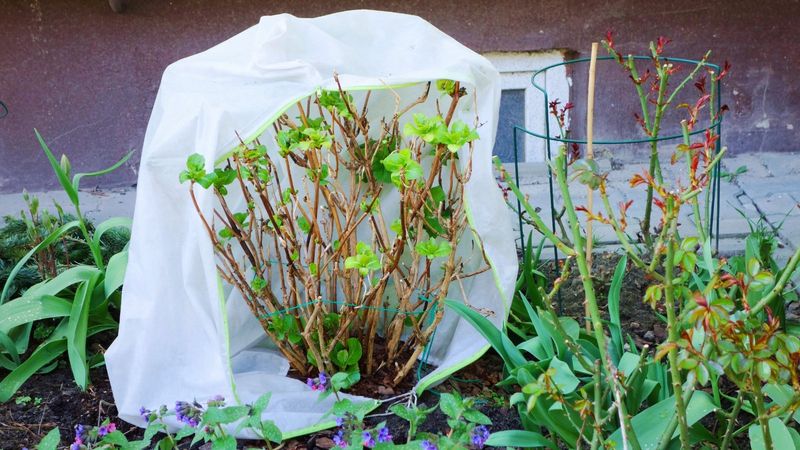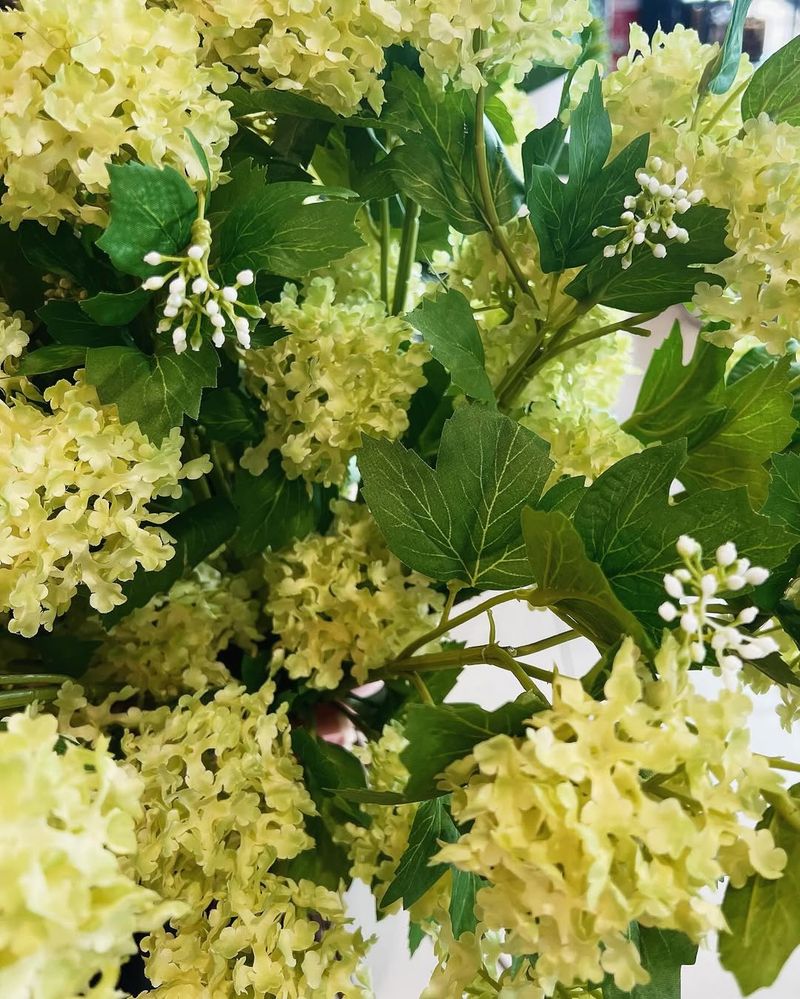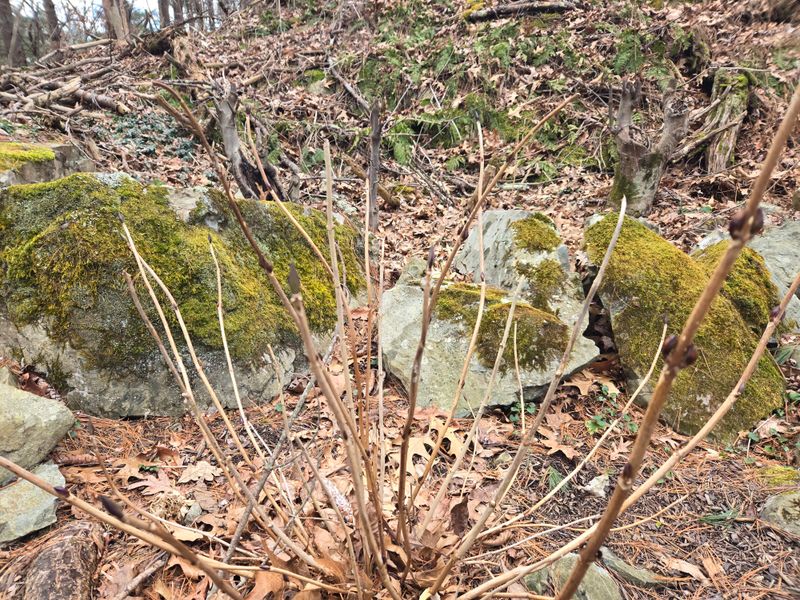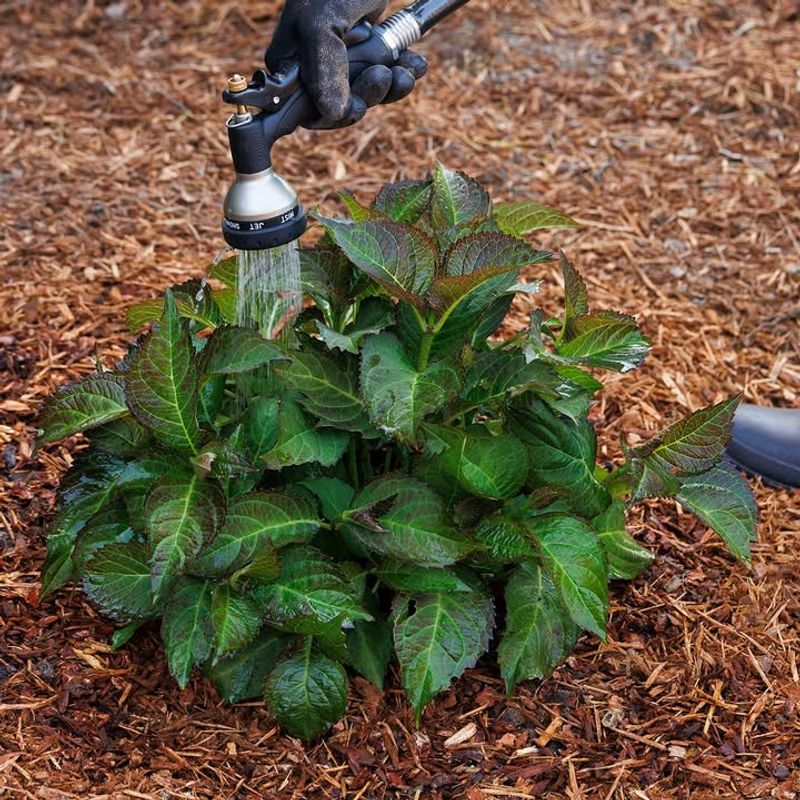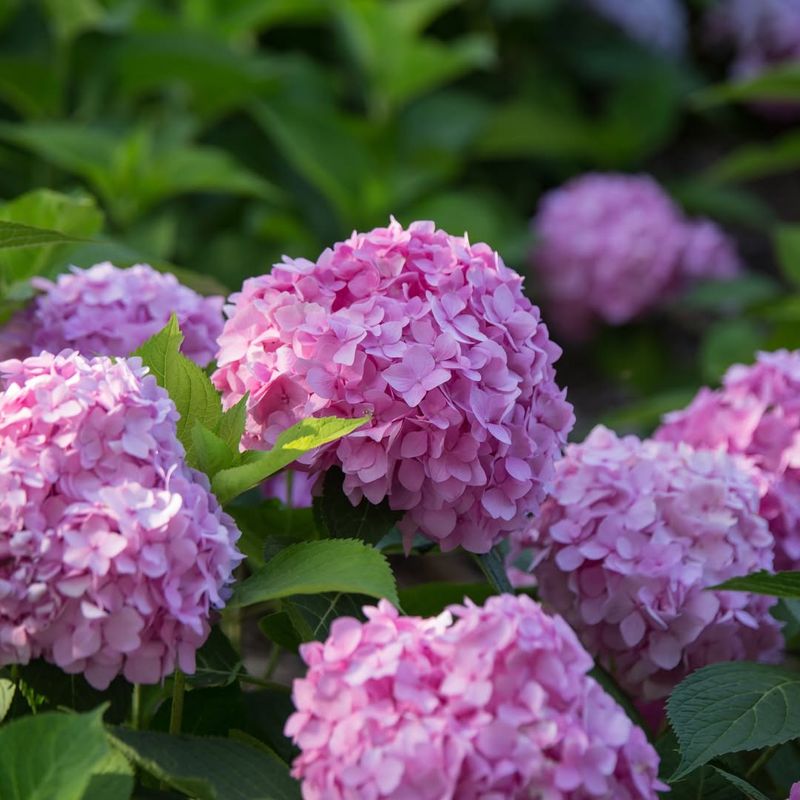Winter in Massachusetts can be brutal on garden plants, especially beautiful hydrangeas. The key to keeping these flowering shrubs alive through harsh New England winters is proper protection before temperatures drop.
Taking time now to shield your hydrangeas from upcoming frost and snow can mean the difference between vibrant blooms next summer or disappointment.
1. Mulch Deeply Around The Base
Creating a thick mulch barrier is your hydrangea’s winter coat. Apply 4-6 inches of mulch around the base of your plant once the ground freezes slightly.
Use pine needles, shredded oak leaves, or wood chips – materials that won’t compact heavily when wet. This insulating layer keeps the soil temperature more consistent, preventing the freeze-thaw cycles that damage roots.
Extend the mulch several inches beyond the drip line for maximum protection.
2. Build A Protective Cage
Chicken wire or hardware cloth makes an excellent shield against winter winds. Form a cylinder around your hydrangea, leaving a few inches of space between the cage and plant.
Secure it with garden stakes, making sure it’s tall enough to cover the entire shrub. The open-top design lets snow fall in naturally, providing additional insulation without weighing down branches.
For extra protection, line the cage with burlap but avoid plastic which traps moisture.
3. Wrap Stems With Burlap
Focus on protecting those valuable flower buds that form on old wood. Cut strips of burlap and gently wrap the stems, securing with garden twine – not too tight!
The natural fibers provide insulation while still allowing air circulation. Unlike plastic wraps, burlap won’t cause condensation that freezes and damages stems.
For macrophylla varieties especially, this step can save next year’s blooms from winter kill even when temperatures plummet below zero.
4. Apply Anti-desiccant Spray
Winter winds can literally suck the moisture right out of your hydrangea’s branches. An anti-desiccant spray creates a protective waxy coating that reduces this moisture loss.
Spray on a mild day when temperatures are above 40°F and no rain is expected for 24 hours. Focus on covering all exposed branches thoroughly.
Reapplication every 6-8 weeks throughout winter provides continued protection for your Massachusetts hydrangeas against the harsh New England wind.
5. Create A Windbreak Barrier
Frigid winds cause more damage to hydrangeas than cold temperatures alone. Strategic placement of windbreak barriers can make all the difference.
Drive several stakes around your hydrangea, then attach burlap or landscape fabric to create a shield. Position the barrier on the north and northwest sides where the harshest winter winds typically blow in Massachusetts.
Leave the south side open when possible to allow some warming sunlight to reach the plant.
6. Water Deeply Before Frost
A well-hydrated hydrangea handles winter stress better than a drought-stressed one. Give your plants a thorough soaking before the ground freezes solid.
Aim for about an inch of water, applied slowly to allow deep penetration. This final drink helps hydrangeas store moisture in their tissues that will sustain them through winter dormancy.
Morning watering is best, allowing foliage to dry completely before evening temperatures drop – crucial for Massachusetts gardens where early frosts can strike suddenly.
7. Avoid Late-Season Fertilizing
Late fertilizing stimulates tender new growth that won’t survive Massachusetts winters. Stop all feeding by August to allow plants time to harden off properly.
If your soil needs amendment, wait until spring when plants begin active growth again. Fall is for protection, not promotion of new growth.
Consider a soil test from UMass Extension Service to determine exactly what your hydrangeas need next season rather than guessing – their specific recommendations for Massachusetts gardens are invaluable.

